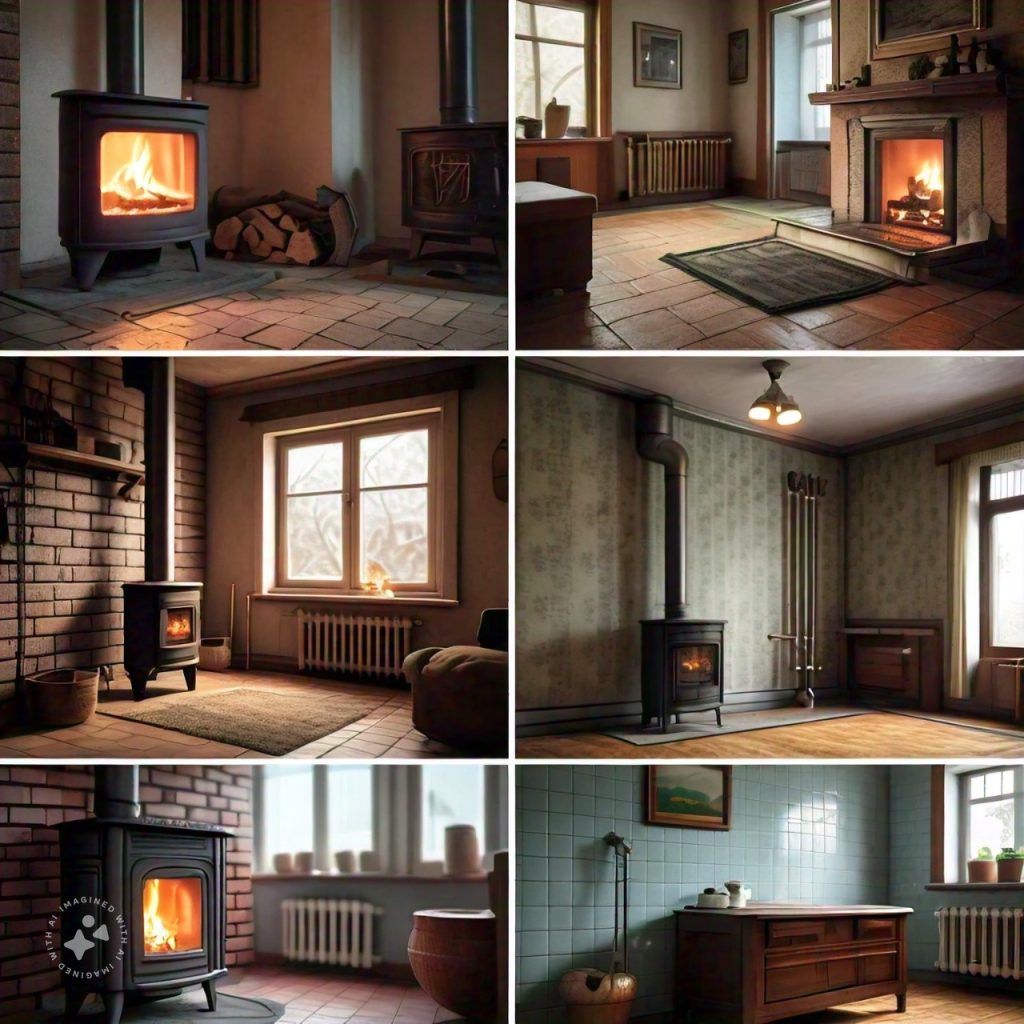Heating a home efficiently and effectively is a top priority for homeowners, especially during the colder months. With a variety of heating options available, choosing the best method can be challenging. This comprehensive guide explores different ways to heat a house, detailing the advantages, disadvantages, costs, and efficiency of each method. Understanding these aspects can help you make an informed decision that suits your needs and budget.
Heating systems are essential for maintaining comfort and safety in your home. They range from traditional methods like furnaces and boilers to modern solutions such as heat pumps and radiant floor heating. Each method has its own set of benefits and drawbacks, influenced by factors like climate, energy efficiency, installation costs, and personal preferences.
Table of Contents
Toggle1. Central Heating Systems
Furnaces
How They Work: Furnaces heat air and distribute it throughout the house via ductwork. They can run on various fuels, including natural gas, propane, oil, or electricity.
Advantages:
- Quick heating
- Compatible with central air conditioning
- Can be highly efficient, especially newer models
Disadvantages:
- Requires ductwork, which can be expensive to install or upgrade
- Can lose heat through ducts if not properly insulated
Cost: Installation costs range from $2,500 to $6,000, with operating costs depending on fuel prices and efficiency.
Boilers
How They Work: Boilers heat water and distribute the heat through radiators or in-floor radiant systems. They can use natural gas, oil, electricity, or biomass as fuel.
Advantages:
- Even and consistent heat
- Efficient for heating large spaces
- Can also provide hot water
Disadvantages:
- Higher installation costs
- Slower to heat up than furnaces
Cost: Installation costs range from $3,500 to $7,500, with operating costs influenced by fuel type and efficiency.
2. Heat Pumps
Air Source Heat Pumps
How They Work: Air source heat pumps extract heat from the outside air and transfer it inside. They can also work in reverse to provide cooling in the summer.
Advantages:
- Energy-efficient, especially in moderate climates
- Provides both heating and cooling
- Lower operating costs compared to traditional systems
Disadvantages:
- Less effective in extremely cold temperatures
- Higher upfront costs
Cost: Installation costs range from $4,000 to $8,000, with lower operating costs due to high efficiency.
Ground Source (Geothermal) Heat Pumps
How They Work: Geothermal heat pumps transfer heat between the ground and your home. They use the earth’s constant temperature to provide heating, cooling, and hot water.
Advantages:
- Extremely efficient and environmentally friendly
- Low operating costs
- Long lifespan
Disadvantages:
- Very high initial installation cost
- Requires significant land area for ground loops
Cost: Installation costs range from $10,000 to $30,000, with very low operating costs.
3. Radiant Heating Systems
In-Floor Radiant Heating
How They Work: In-floor radiant heating systems circulate warm water or electric heating elements under the floor, providing even and efficient heat.
Advantages:
- Consistent, even heat distribution
- Silent operation
- Can be highly efficient
Disadvantages:
- High installation costs
- Difficult to retrofit into existing homes
Cost: Installation costs range from $6,000 to $14,000 for a whole-house system, with varying operating costs based on energy source.
4. Electric Heating
Electric Baseboard Heaters
How They Work: Electric baseboard heaters use electric resistance to generate heat, which is then radiated into the room.
Advantages:
- Easy to install
- No ductwork required
- Good for zone heating
Disadvantages:
- High operating costs
- Less efficient than other methods
Cost: Installation costs range from $300 to $1,200 per unit, with high operating costs due to electricity prices.
Space Heaters
How They Work: Space heaters are portable units that generate heat through electric resistance, infrared, or convection.
Advantages:
- Low initial cost
- Portable and flexible
- Good for supplemental heating
Disadvantages:
- High operating costs
- Not suitable for whole-house heating
Cost: Purchase costs range from $20 to $200 per unit, with high operating costs for long-term use.
5. Alternative Heating Methods
Wood and Pellet Stoves
How They Work: Wood and pellet stoves burn wood or compressed pellets to produce heat, which is radiated into the room.
Advantages:
- Renewable fuel source
- Can provide significant heat
- Lower operating costs if wood or pellets are inexpensive
Disadvantages:
- Requires regular maintenance and fuel storage
- Can be labor-intensive
Cost: Installation costs range from $1,000 to $5,000, with varying operating costs depending on fuel prices.
Solar Heating
How They Work: Solar heating systems use solar panels to collect and convert sunlight into heat, which is then distributed throughout the home.
Advantages:
- Renewable and environmentally friendly
- Low operating costs after installation
Disadvantages:
- High initial installation cost
- Dependent on sunny weather and geographic location
Cost: Installation costs range from $5,000 to $30,000, with minimal operating costs.
Factors to Consider When Choosing a Heating System
- Climate: Your local climate plays a significant role in determining the most efficient heating method. Heat pumps are ideal for moderate climates, while furnaces and boilers are better for colder regions.
- Efficiency: Look for systems with high-efficiency ratings to save on operating costs. Energy-efficient systems might have higher upfront costs but offer long-term savings.
- Installation Costs: Consider the initial costs of installing a new heating system. Some systems, like geothermal heat pumps, have high installation costs but low operating costs.
- Operating Costs: Evaluate the long-term costs of running the system, including fuel or electricity prices and maintenance.
- Environmental Impact: Consider the environmental footprint of your heating system. Renewable energy options like solar heating or biomass stoves are more eco-friendly.
- Space and Layout: The design and layout of your home can affect the suitability of certain heating systems. Radiant floor heating is ideal for new constructions, while space heaters can be effective in smaller areas.
- Maintenance: Some heating systems require more maintenance than others. Ensure you’re prepared for the upkeep required for your chosen system.
Conclusion
Heating your home involves balancing various factors, including efficiency, cost, climate, and personal preferences. Central heating systems like furnaces and boilers are traditional choices that offer reliable performance, while modern options like heat pumps and radiant heating systems provide energy-efficient alternatives. Electric heating methods are straightforward but can be costly to operate, whereas alternative methods like wood stoves and solar heating offer renewable energy solutions. By understanding the different ways to heat a house, you can make an informed decision that ensures comfort, efficiency, and sustainability.

